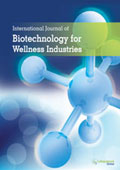ijbwi
|
|
Abstract: In the present review, we focus on the importance of blood serum factors for tumor growth in vivo. Data from mice experiments indicate the existence of serum factors, which decrease the dormancy of Ehrlich carcinoma cells from 85 to 20%. The impaired production of these factors increases the life span of tumor-bearing animals from 14 days to 120 days. Blocking the production of tumor-specific factors causes the complete regression of already developed Ehrlich carcinoma. These serum factors do not affect the malignant carcinoma cells in vitro. We identified serpins as tumor dormancy serum factors. Experimental evidence suggests that serpins are not only essential for tumor growth. Serpins are also involved in the regeneration of normal tissues, such as adipose tissue, recurrence after cosmetic operations (liposuction), inhibiting rejection after liver transplantation, protection of parasitic flat worms living in host tissues and organs etc. We conclude that the inhibition of serum dormancy factor may represent attractive novel strategies for the prevention and treatment of relapsed cancers. Keywords: Anti-proteases, Ehrlich carcinoma, Proteases, Serpins, Serum proteins, Tumor growth, tumor dormancy.Download Full Article |
|
|
Abstract: Chemical composition of the fresh and dried mushroom Pleurotus ostreatus and their bioactive secondary metabolic products were studied. The ethanolic extracts of the P. ostreatuscultivated on rice straw supplemented by wheat bran were studied by Gas Chromatography/Mass Spectrometry (GC/MS) analysis. A total of hundred and seven metabolites were detected in tested samples. These include 56 metabolites only detected in fresh sample, 37 metabolites only detected in dry sample, and 14 metabolites were detected in the both samples. The detected metabolites could be classified into nine chemical groups including 2 metabolites related to acids, 5 alcohols, 27 alkane, 3 amides, 27 esters, 8 fatty acids, 4 terpenoids, 29 heterocyclic and 2 phenols. The bioactivity of the metabolic products could be classified: anticholesterol, anticancer and essential fatty acids which support human health. On comparison between fresh and dried P. ostreatussamples, we found that the high number of metabolites was recorded in the fresh extract. Fifty five aroma compounds were recorded and including (27 esters, 9 ketones, 7 thiols, 5 alcholos, 4 terpenoids, 2 phenols and 1 aldehyde). The selenium content in P. ostreatus samples was measured by using ACAL –APR -51-00 test methods and showed that the fresh sample has 58.24 mg/kg but the dry sample has 100.31 mg/kg. Keywords: Mushroom, Pleurotus ostreatus, Chemical profile, Bioactive metabolites.Download Full Article |
|
|
Abstract: We have different possibilities and tools to assess the impact of pollution on marine ecosystems. The ecotoxicological approaches are based on the use of biomonitors and biomarkers. They aim to study the effect of toxic chemicals on the biological organisms especially at the population, community and ecosystem levels. The ultimate goal of ecotoxicology is to be able to predict the effects of pollution so that the most efficient and effective action to prevent or remediate any detrimental effect. In order to assess the impact of anthropogenic activities on the aquatic ecosystem and to insure compliance with regulation or guidelines, we use biomonitoring. This kind of approach is based on the use of biological responses in order to assess anthropogenic changes in the environment. Biomonitoring involves the use of indicator species such as filter feeding mollusk bivalves. These organisms tend to accumulate pollutants in their tissues without showing any apparent detrimental effect. Moreover, they could reflect the real bio available fraction of the pollutant. In order to have an early warning system predicting the pollution effects even at low levels, biomarkers were extensively studied. Some of them were validated in both field and in vivo conditions. In the present paper, the usefulness of bioindicators and biomarkers in pollution monitoring are discussed. An overview of results from case studies dealing with in situ, in vivo and transplantation experiments is presented. Keywords: Marine pollution, bivalves, Ruditapes decussates, Cerastoderma glaucum, field validation.Download Full Article |
|
|
Abstract: Many edible mushrooms are considered as “functional” foods having immunomodulatory and anticancer properties. The ability of mushrooms to exert biological effects and modulate immune functions is due to the presence of bioactive compounds with most important the polysaccharides β-glucans. B-glucans are found in bacteria, fungi and plants and act on several immune cell receptors resulting in both innate and adaptive response. The incorporation of β-glucans in various foods and animal feed has the potential of creating novel “functional” food products, with many health benefits to human and animal nutrition. Keywords: Mushrooms, β-glucans, Functional food.Download Full Article |
|
|
Abstract: Globally, more than 30 million people suffer from diabetes mellitus type 1 (T1DM) characterized by pancreas producing little or no insulin hormone to facilitate glucose entering cells for energy production. T1DM patients tend to suffer a higher overall rate of atherosclerosis, cancer, and end-stage renal failure. No drug or surgical therapy seems to halt its annual upward trend amongst children and young adults. Consequently, a significant number of sufferers turn to complementary or alternative therapies for help to arrest this chronic endocrine condition. This paper discusses how a well-designed evidence-based dietary and nutritional therapy with some lifestyle modifications might offer a solution for this highly complex autoimmune disorder. The treatment outcome demonstrated a partial regeneration of pancreatic islet beta cells with substantial improvement for all relevant serum and urine markers tested. Keywords: Type 1 diabetes mellitus, insulin-dependent diabetes, juvenile diabetes, autoimmune disorder, nutritional therapy.Download Full Article |



